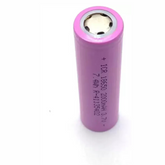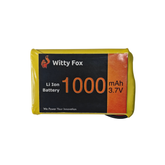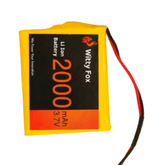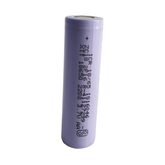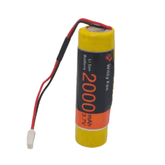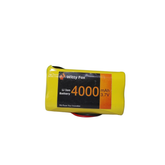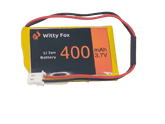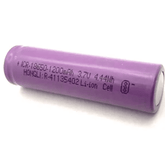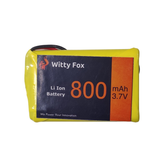Manufacturing Lithium Ion Batteries
Summary
Dive into the heart of advanced technology with our blog on Manufacturing Lithium Ion Batteries! Discover the intricate process behind crafting these energy powerhouses and unravel the challenges faced by manufacturers. Explore the Indian perspective, unraveling how lithium-ion batteries are expertly made in the country. Delve into the secrets of their core ingredient, unveiling the science powering these marvels. From the production intricacies to the innovation driving lithium-ion cells, our blog equips you with essential insights. Don’t miss the electrifying conclusion that ties it all together. Embark on this enlightening journey and power up your knowledge!
Lithium Ion Batteries Manufacturing
Lithium-ion batteries are the driving force behind today’s electronics revolution. From cell phones and tablets to electric vehicles, Li-ion is a powerful source of power that can be tuned for different purposes.
Manufacturing lithium ion batteries requires expertise in areas such as chemistry, engineering and quality control. In addition to using advanced manufacturing technologies like automated testing processes and precision robotic assembly ,manufacturers must also pay attention to safety procedures throughout all stages of production from sourcing raw materials to end product delivery.

Ensuring operational excellence with perfecting safety protocols remain top priorities within most companies due their sensitive nature which poses both chemical hazards as well hazardous fire risk if handled incorrectly or damaged during routine use . High performance battery cells require an intricate balance between charge capacity, active material costs , cycle life expectancy & form factor design components making it increasingly important for manufacturers have invested API teams dedicated towards research & development process flow optimization ;
All these factors enable industry leaders maintain long term strategic partnerships backed by robust customer service support while delivering innovative products keeping up with ever evolving market demands.
read more : All About Lithium Polymer Batteries (LiPo)
Lithium Ion Batteries Manufacturing Challenges
Lithium-ion batteries are becoming increasingly common in consumer electronics and other products, but manufacturers face several challenges when it comes to their production.
The main challenge lies in finding cost effective ways of producing these powerful cells while meeting the safety regulations set by organizations like Underwriters Laboratories (UL). To do this, companies must invest substantial funds into research and development to ensure each cell meets quality standards before shipping them out; they also need an efficient and safe manufacturing process that produces reliable results.

Moreover, high levels of precision can be required during fabrication which often means fine adjustments for temperature control, ingredient composition or component size must be made carefully from batch to batch. Lastly, lithium-ion battery makers should pay close attention to current industry trends as new technologies such as solid stated energy storage could potentially emerge on a large scale within the next few years forcing producers back onto their feet with redesigns - possibly without enough lead time given its difficult nature.
All things considered making Lithium Ion Batteries requires expensive machinery along with tight management over chemistry and electrical components – certainly proving challenging even for some veteran experts at times!
read more : Which acid is used in a car battery?
How are lithium ion battery made in India?
Lithium-ion batteries are widely used in India for a variety of applications. The manufacturing process is complex and involves several steps. In the first stage, raw materials such as lithium metal oxides and graphite particles are mixed together to form electrodes which act as anode (positive sides) or cathode (negative side).
Thirdly, they are fitted into cylindrical cells that can be stacked on top of each other with separator membranes in between them to prevent short circuits; fourthly electrolyte solution consisting mainly of organic solvents containing salts attachment additivities like LiPF6 is infused before charging/discharging cycles take place at factory settings so that their performance characteristics meet requisite standards; finally third party quality assessment tests including RAMP Compliance Tests & Cell Level Testing among others ensures safety protocol compliance culminating assembly into power packs according to customer requirements including handling liquid cooled systems when necessary for better thermal management solutions.
Read our blog Lipo vs Li ion battery where we explained what Lithium-ion and lithium-polymer batteries are subject to specification, advantages, and disadvantages
What is the main ingredient in a lithium-ion battery?
A lithium-ion battery is a type of rechargeable battery that has become increasingly popular for use in consumer electronics products such as computers, tablets and smart phones.
It is also used in some electric vehicles and other energy storage applications. The main ingredient or chemical component inside a lithium-ion cell is the metal lithium (Li). In its most common form, this element takes on an ionic charge when it bonds with oxygen from air to create Li2O which forms the positive electrode through oxidation at the surface layer of graphite during charging cycles.

During discharge processions electrons flow out producing electricity due to intercalation into layers of carbon materials within negative electrodes while simultaneously releasing oxygens back into atmosphere as water vapor thus completing cycle all over again whenever power needs replenishing via connector cord paired up with compatible charger unit plugged right in wall outlet socket ready for hookup transfer duty!
read more : Lithium-Ion vs Lithium Polymer Battery
The production of lithium-ion cells
The production of lithium-ion cells for energy storage has become increasingly important over the past decade. We have seen huge advancements in technology, both from a manufacturing and design standpoint. By leveraging our knowledge base and expertise to create efficient batteries with better performance capabilities and safety features, we can help companies deliver reliable solutions that provide long-term value while meeting customer expectations.
Lithium ion cell production requires precision engineering techniques which ensure high quality results such as uniformity, consistent cycle life ratings, stable discharge capacity levels etc,.
Our advanced control systems also offer diagnostic capability needed to analyze power curves or assess operational states remotely allowing us to closely monitor battery output during operation thus delivering enhanced product lifespans for customers. With ever increasing demand across industries served by various suppliers producing all kinds of technologies —from miniaturized wristwatch size packs used in medical devices right up to large scale stationary installations—we continually strive towards achieving higher standards ensuring safe yet cutting edge designs at affordable prices making it easy for clients worldwide seeking optimum return on their investments!
read more : Automatic Battery Charging Circuit
Conclusion:
The world of lithium-ion battery manufacturing is both fascinating and challenging. We've explored the intricate process of how these energy storage devices are made, delved into the hurdles faced by manufacturers, and even peeked into India's growing role in this industry. The main ingredient, lithium, is undeniably the star of the show, but it takes a symphony of materials and expertise to craft these powerhouses. As demand for cleaner energy solutions soars, the production of lithium-ion cells will continue to play a pivotal role in our sustainable future. Stay charged, stay informed, and be a part of this electrifying journey!
If you appreciate our work don't forget to share this post and leave your opinion in the comment box.
Please do check out other blog posts about Popular electronics
Make sure you check out our wide range of products and collections (we offer some exciting deals!)



